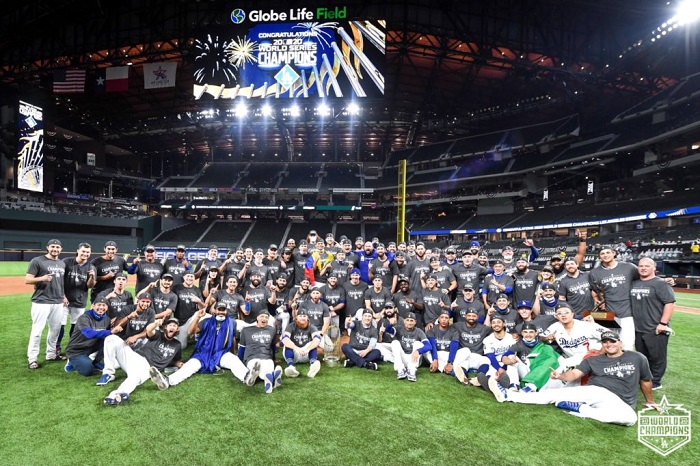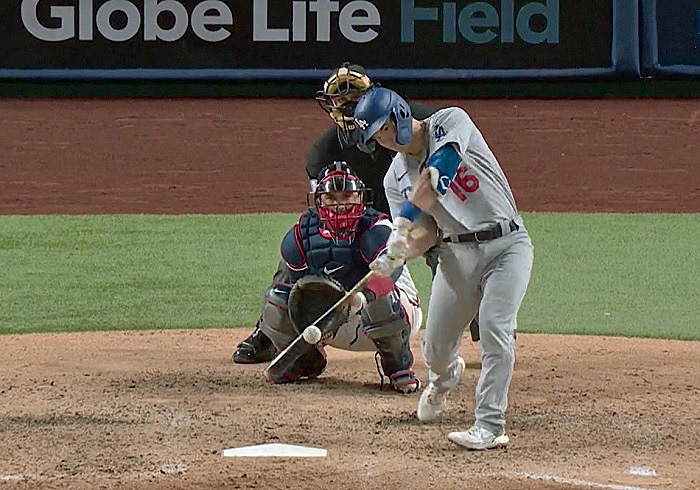By any measure, the 2020 MLB season was bizarre, as the global pandemic shutdown Spring Training on March 13, delayed Opening Day until July 23, reduced the regular season to 60-games that were played in front of cardboard fans, and a 16-team postseason format that included three teams with losing records (Cincinnati Reds, Houston Astros, and Milwaukee Brewers). Several new terms were added to the MLB glossary: COVID-19 Action Plan, bubble, safety protocols, breaking protocol, social distancing, taxi squad, etc.
Nonetheless, there were lessons learned from the 2020 season that could very well change long-standing MLB paradigms and become the new normal.

* * *
Spring Training
Position players have long complained that spring training was unnecessarily stretched out while acknowledging that pitchers need a bit longer to build up arm strength. That argument was put to the test in 2020 when the season began with only two weeks of summer camp. While rosters were expanded to allow for additional pitchers, position players, for the most part, were indeed ready to hit major league pitching. But for the first couple of weeks, fans were frequently surprised by baserunning mistakes and defensive mental errors that were uncharacteristic of professional players.
While five weeks of Spring Training could be shortened, two weeks is insufficient for players to perform to MLB standards.
Regular Season
The 162-game MLB regular season is long, too long. The 60-game season in 2020 was adequate to separate the very good teams from the poor teams, but insufficient to distinguish average teams competing for a playoff berth. It is unlikely that teams – and players – would be willing to reduce their respective income enough to allow for a significantly reduced schedule. Perhaps MLB and the Players Association should consider splitting the regular season into first and second halves (80-games in each half) to determine which teams will qualify for the playoff participants, eliminating wild card teams.
Designated Hitter
Baseball traditionalists have pushed back on the designated hitter (DH) rule since it was introduced by the American League in 1973. Knowing that the Players Association would never agree to remove the rule, traditionalists were hopeful that the NL would continue to rebuff the union’s attempts for a universal DH. But with the unconventional 2020 season came some unique rule changes, including the NL adopting the DH. Traditionalists saw the change equivalent to allowing the proverbial camel to get its nose inside the tent, a first step that would ultimately result in the universal DH.
After watching the Dodgers effectively use the DH in regular and postseason games, this traditionalist has become an advocate for making the rule permanent. Whether it was Justin Turner, Edwin Rios, Max Muncy, or Will Smith as the Dodgers DH, it made for a more exciting offensive lineup, and it often kept pitchers in the game when they may have otherwise been replaced by a pinch hitter.

Extra Innings
For the regular season, when a game was tied at the end of nine innings, every subsequent half-inning began with a runner on second base; another perversion to the game for traditionalists when announced, but turned out better than most expected. The rule significantly reduced the number of extra innings, was exciting, and saved pitching staff. Much better than ending games in ties, as some suggested.
Seven Inning Doubleheader
Designed for 2020 short season in anticipation that doubleheaders would be needed to complete the 60-game schedule and preserve pitching staffs. Not needed in normal seasons, when doubleheaders are rare, with full minor league rosters and possibly taxi squads available.
Taxi Squads
Three-player taxi squads were a necessary change with the potential of novel coronavirus infections or injuries. Even with a return of minor league seasons, this change may continue instead of optioning players multiple times during a season.
Three-batter minimum for pitchers
This was a change that was going to happen even before COVID-19 messed with the entire season. It was a necessary change to eliminate managers from changing pitchers after facing only one batter.
* * *
For those of us who are dinosaur traditionalists, changes to this great game may range from unsettling to a full-on rant, or they may be a way to make the game even more exciting.
What do you think, Dodgers fans?
* * * * * *




 November 22nd, 2020 at 8:00 am
November 22nd, 2020 at 8:00 am  by 0799291000348
by 0799291000348  Posted in
Posted in 

GREAT piece, Jesse!
The extra inning rule with a runner on second base to begin each extra inning seems like a good idea to me. Especially during night games.
I would like to see the DH stay out of the NL. I think it’s good the way it is with the NL being different than the AL. I think many of us have gotten use to the old NL style and I’d hate to see it go away.
Completely understand your preference about the DH, I had been there for 47 years. For me, watching Dodgers hitters at bat in place of the pitchers was very exciting. Then, Will Smith was used as the DH with Clayton Kershaw pitching. I remember thinking that without the DH Smith would be sitting on the bench and I would be watching Kershaw hitting — right then I embraced the DH for the NL.
I am about as old-school as they come and have long resisted that the DH was even a ‘position’ in a baseball lineup. I even held on to this premise throughout the COVID-19-shortened 2020 season.
…and then came Justin Turner.
To put it bluntly and in direct contrast to my heartstrings, without the DH in the NL moving forward, JT’s tenure as a Dodger – regardless of how popular and important he is in the Dodgers clubhouse – is over. He needs to go – period.
At 36 years old tomorrow (November 23), his best days are clearly behind him. He is a roadblock for guys like Edwin Rios, Matt Beaty, and others within the Dodgers deep minor league system.
…unless he can stay on as a designated hitter and part-time 3B/1B; and even then, only if he is willing to accept a very team-friendly free-agent contract.
There. I said it. Fire away.
Great point about JT! Not the defensive player he once was, but he can still swing the bat
I am old school but actually like the DH and hope NL adopts it.
Extra innings I think playing 11 innings the normal way, and then from the 12th inning on put the man on second to open the rest of the innings.
3 batter rule didn’t speed up games as intended so I think it’s a gonner.
Good option to use man at second after the 10th or 11th inning. With 162 game schedule I would use the new rule as is for one season as trial period. I cannot find stats in support of the 3 batter rule shortening game, but Dave Roberts drove me nuts in previous seasons with his incessant pitcher changes after one hitter, and the Dodgers won 71% of their games last season, so the rule change did not hurt them. I am in favor of making that rule permanent.
Somebody wrote a long piece on how 2020 games despite the 3 batter rule were longer than 2018 and 19. Additionally the managers hate the rule. IAM in agreement with you I would not mind keeping it. However the longer games might be the result of limited spring training buildup for starting pitchers resulting in them only pitching 3-4 innings and more bullpen games.